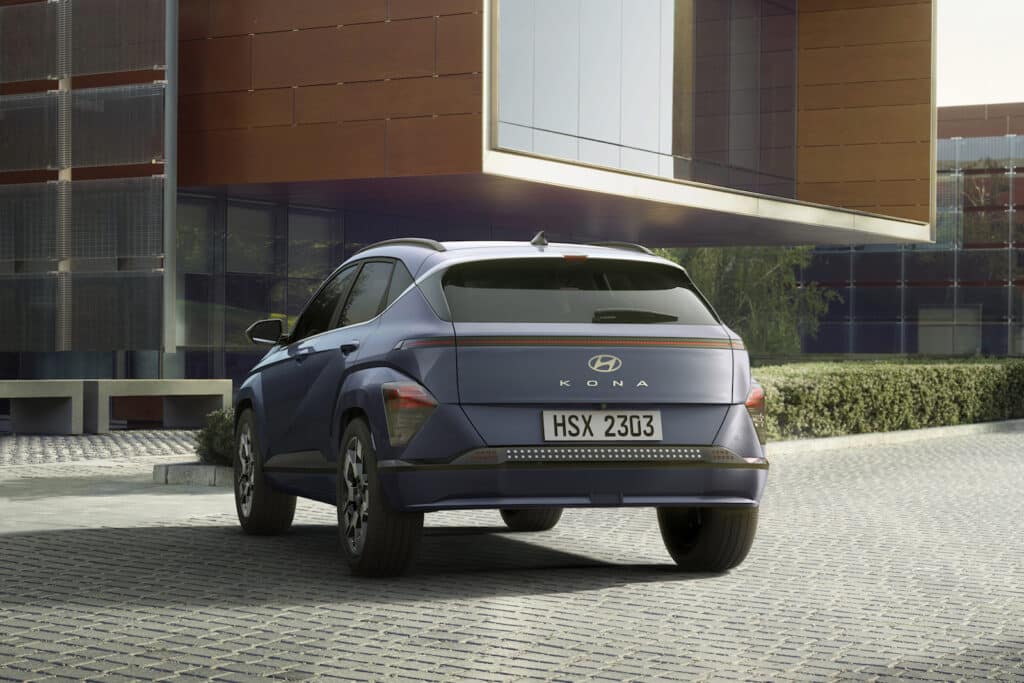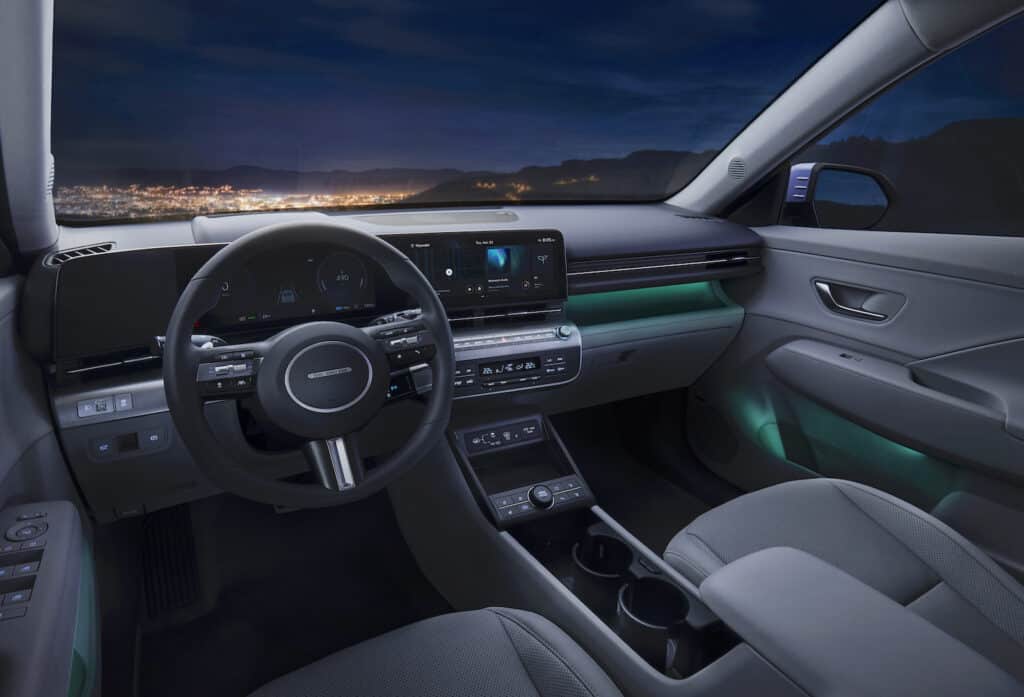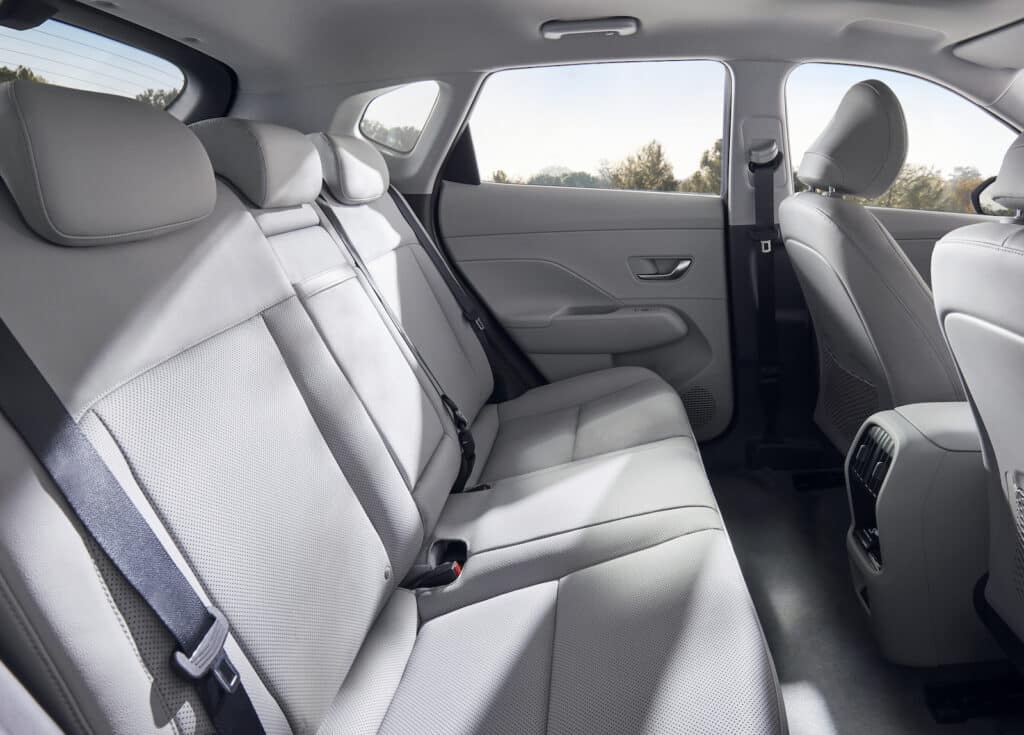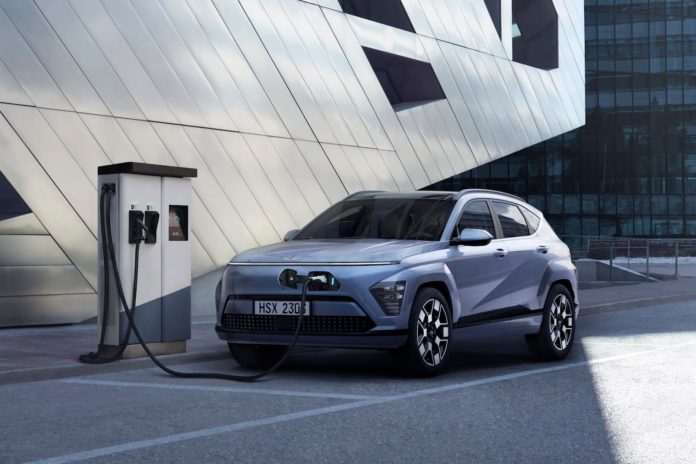The next-generation Hyundai Kona will reach U.S. showrooms in the coming months and while it is, in many ways, an evolutionary update, there are plenty of things worth noting.
To start with, the South Korean crossover grows nearly 7 inches longer, with a cabin that’s not only roomier but markedly upgraded. It adds new tech features, along with a larger battery pack for the EV version that delivers a slight bit more range. Curiously, while horsepower is up, the all-electric model does lose some torque.
As before, there will be a number of different models offering buyers a choice of either gas or all-electric propulsion. Among the versions using internal combustion power that includes a sporty N Line model, while Hyundai now adds a short-range battery model for those looking to go green on a budget.
The automaker’s Korean headquarters released some select details about the 2024 Hyundai Kona. We’ll have to wait for full specs. But here’s what we’ve so far learned.
Longer, roomier
Depending upon the trim package, the new crossover grows as much as 6.9 inches in overall length, the wheelbase stretched by 2.4 inches. The automaker set out to address some of the key complaints about the first-generation Kona, notably the cramped cabin and cargo bay. The increased dimensions certainly help, as does the switch to front seats that are 30% thinner. With all seats upright, Hyundai claims cargo space jumps from 13 to 17 cubic feet.

Buyers can opt for the new “relaxation seat” for the driver which, the claim goes, is much more comfortable on long cruises.
The styling updates are modest — the most obvious difference with the 2024 model being the introduction of smaller, lower-mounted headlamps and the light bar running atop the new Kona’s grille. This “Seamless horizon” design is mirrored by the 2024 model’s new taillight design.
There’ll be subtle differences depending upon trim. The body cladding is gray on all gas-powered models but the N Line, which picks up the body color cladding of the EVs. The N Line also adds a fairly aggressive two-piece rear spoiler.
Powertrain options
Sadly, that model appears to be more show than go, with no difference in power.
There are some big changes when it comes to the EVs drivetrain. Horsepower is up by 17, to 218 horsepower. But, unless Hyundai goofed the release, torque tumbles from a reasonably solid 291 pound-feet to a more anemic 156.
Power comes from a 65.4 kilowatt-hour lithium-ion pack, an increase of 1.4 kWh. Using the global WLTP test cycle, Hyundai claims that will deliver 304 miles per charge, an increase of 3 miles. It didn’t release U.S. specs but this would suggest an equally modest jump from the current EPA rating of 258 miles per charge.

Charging
Charging times appear to be quicker, more in line with the Hyundai Ioniq 5 and we’ll also have to wait to see if that means charging power jumps from 400 to 800 volts now. Expect the 2024 Kona to go from 10% to 80% of capacity in just 41 minutes.
Like the Ioniq 5, the Kona now features bi-directional charging, meaning it can provide power. You could use that, say, to power home appliances during a blackout, or to operate a TV at a campsite.
Short-range EV
The short-range model will use a 48.4 kWh battery pack. It’s unclear if it will stick with an NCM — short for nickel-cobalt-manganese — pack or migrate to less energy-dense lithium-iron-phosphate. We’ll have to wait for range data. This version develops the same torque as the long-range Kona but just 146 hp.
Don’t be surprised to see a true sport N model follow in a year or two. Car & Driver is reporting Hyundai also is working up a Kona Hybrid, but not for the U.S.
Gas models will be offered with either front- or all-wheel drive. Though the EVs will use a single, front-mounted motor, a sportier package with front and rear motors could follow.

New technology
Expect to see an expanded range of advanced driver assistance systems, inline with what Hyundai now is offering on other product lines.
Factory-released images suggest the new tech includes a larger infotainment screen and a digital instrument cluster, both under a single sheet of glass. The automaker isn’t saying if that will be standard across the entire 2024 Kona range, however.
There’ll be a new, 360-degree camera view, as well as the ability to use a smartphone instead of a key, something rolling out across the entire Hyundai Motor Group line-up of Hyundai, Genesis and Kia models.
Timing, pricing
Overall, the cabin appears to have been markedly upgraded, much as we’ve been seeing on other Hyundai product lines.
The 2024 Hyundai Kona is on the docket for an April debut at the New York International Auto Show. Pricing should be released closer to the on-sale date during the third quarter of 2023.

